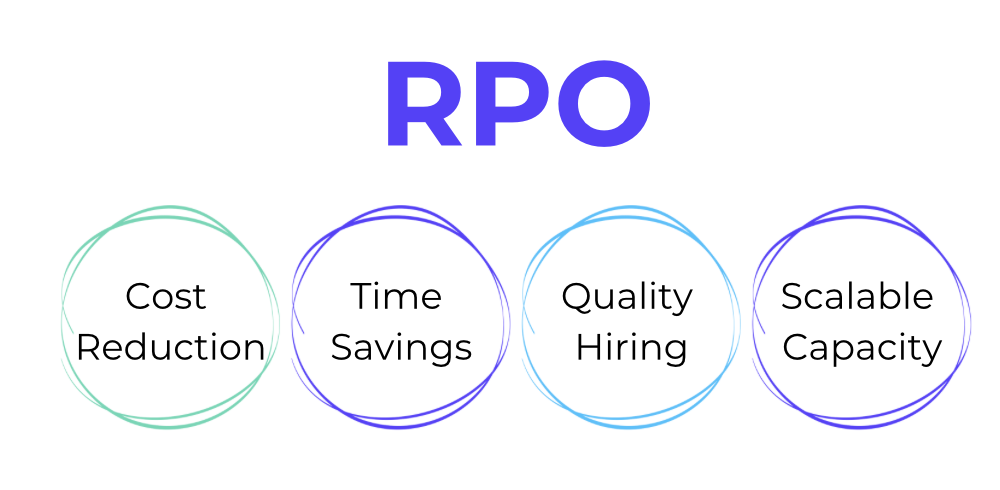With different types of quality assurance (QA) testing crowding the software development world, understanding the unique characteristics of each is the only way to solve any confusion when it comes to which option is the best fit for your needs.
We took one for the team and decided to explain the key types of QA testing in detail, hoping to help you choose the right approach for your testing needs.
Need help?
SnapStack can assist you with your QA testing needs.
GET IN TOUCH
Table of Contents
- Unit Testing
- Integration Testing
- End-to-End Testing
- Manual Testing
- Automation Testing
- AI Testing
- Functional Testing
- Visual Testing
- Performance Testing
- Regression Testing
- Compatibility Testing
- Accessibility Testing
- Smoke Testing & Sanity Testing
- White Box & Black Box Testing
- Testing For Different AUTs
- Types of QA Testing: Key Takeaways
- FAQs
Unit Testing
Unit testing focuses on testing the smallest piece of software — the unit. A unit can be a function, method, module, or even an object in an object-oriented paradigm. The key goal is to validate that each unit of the software performs as expected, ensuring they are more likely to function effectively when combined into the complete application.
A regular unit test generally includes several elements:
- Test fixture — parts of a unit test that help in setting up the environment necessary for executing the test case. It ensures no external influence interferes with the testing process by creating the initial stages for the unit under test.
- Test case — a script used to evaluate the behavior of the unit under test.
- Test runner — a structure designed to facilitate the conduct of numerous unit tests, providing a detailed analysis and reporting of their results.
- Test data — a series of values that mimic authentic user inputs into the system.
- Mocking and stubbing — replacements for the actual dependencies of the unit under test, if testers need dual units for testing.
Unit testing provides multiple benefits such as easier code maintenance, reduced software development cost, and higher code quality, which is why experts agree that unit testing should make up about 70% of your testing strategy.
Unit Testing Example
Consider a banking application where a unit is a function that calculates the total balance available in the user’s account. A unit test will create a test to validate that the function handles various scenarios properly — it adds up the deposit amounts correctly and deducts the withdrawal amounts appropriately.
For example, if the account had an initial balance of $1000, and the user makes a deposit of $500 and a withdrawal of $200, the function should return a final balance of $1300. The unit test will run this scenario as a test case and confirm that the function returns the correct amount. If it doesn’t, the failed test signals that there’s a defect in the function’s code that you need to fix. That’s unit testing in action!
Integration Testing
Moving from individual components, we come to interaction testing, which focuses on the connections between different functions, modules, or services. Integration testing ultimately ensures that the software’s individual components interoperate effectively when combined, contributing to a finer product and better user experience.
While there are many integration testing strategies, the most preferred are:
- Big bang strategy, where all the components are merged and put through testing as a comprehensive entity.
- Incremental approach in which distinct groups of interrelated logic components are integrated and tested one after the other.
You can carry out the incremental approach in different ways:
- Bottom-up — integrates and tests smaller components first before moving toward larger ones
- Top-down — integrates and tests smaller components first before moving toward larger ones
- Sandwich — cleverly merges the bottom-up and top-down techniques to form a wholesome strategy
Integration Testing Example
Let’s take a look at a typical example of integration testing in a banking application. Suppose there are two modules: ‘Create New Account’ and ‘Deposit’. At the unit level, you have to test each of these modules individually.
However, when it comes to integration testing, we need to assess how these functions interact. So, how does the process work? We begin by creating a new account using the ‘Create New Account’ module. Once the account is successfully created, we proceed by using the ‘Deposit’ module to carry out a deposit in the newly created account.
During this process, the integration testing validates if the ‘Deposit’ module is accurately recognizing and interacting with the new account created by the ‘Create New Account’ module. If the deposit process is successful and the proper amount displays in the newly created account, the integration testing is a success. This shows that the distinct modules are functioning seamlessly together.
End-to-End Testing
Transitioning into an even more macroscopic perspective, we come to end-to-end testing. This type of testing assumes a user perspective, testing the system’s complete functionality, including interfacing with the database, network, and other services. It validates that the entire flow of an application is performing as designed from start to finish.
End-to-End Testing Example
Let’s say you’re testing an online shopping application. The end-to-end testing in this case would involve:
- Creating a new user account
- Logging into the account
- Browsing products
- Selecting a product and adding it to the shopping cart
- Proceeding to checkout, where you enter payment and delivery details
- Finally, placing the order and logging out
This process validates all integrated components of the system, from user interface and database to third-party payment integrations and email notifications, ensuring that each part is functioning as intended when interacting as a cohesive unit.
Manual Testing
Taking a step back from software-led testing, let’s consider a classic form of testing that is often indispensable during development. Manual testing is a type of testing that is performed by a human sitting in front of a computer carefully executing the test steps.
This type of testing is adaptable, making it particularly useful in the early stages of development when changes are frequent. However, it can be time-consuming and prone to human errors, in contrast to automated tests.
Manual Testing Example
An example of manual testing is the process of checking a web page. The tester might first validate that all expected elements are present, such as headings, images, and forms. They’d then interact with those elements, filling out form fields, navigating through dropdown menus, and clicking buttons and links.
They’d test whether all these elements behave as intended on various browsers and devices. A manual tester should focus on confirming that any validation errors are shown as expected on form submission, and confirm that a success message is displayed when the form is filled out correctly.
Automation Testing
Despite the value of manual testing, the rise of modern development methods has called for a more efficient method of testing — automation testing. It primarily involves creating test scripts and using other software to perform the testing tasks. However, the tester has to update the scripts continually to mirror the changes in the software being tested.
Here are some of the benefits of automation testing:
- Speed: Automated tests can be run quickly and repeatedly, making them ideal for agile or DevOps environments.
- Efficiency: Automation allows for more tests to be executed than manual testing.
- Avoids Human Errors: Automated tests perform precisely the same operation each time they are executed, eliminating the possibility of human error.
- Wide Coverage: Automated testing can cover a wider range of tests and scenarios, making it beneficial for anything from load testing to regression tests.
Automation Testing Example
Consider your favorite online shopping platform, whether it’s Amazon, eBay, or a local eCommerce site. Imagine every time a new feature is added, say a new payment method, the software developers need to ensure this addition isn’t breaking any already existing function of the site. Doing this manually can be quite tedious and time-consuming. Here’s where automation testing steps in to save the day.
With the help of automation tools, the developers can write scripts for the new feature, in this case, the checkout process involving the new payment method. Once these scripts are ready, they’re executed, which involves simulating actions, such as clicking buttons, filling out payment information, and finalizing the purchase.
If everything goes smoothly, the feature passes the test. But if there’s an abrupt halt or an unexpected result, there’s a problem that requires attention. This entire process, which might’ve taken hours if done manually, could be efficiently concluded within minutes thanks to automation testing.
AI Testing
Next up is AI testing, one of the newer forms of testing enabled by advancements in technology. AI testing sticks to the well-established software testing life cycle, but it builds upon it by introducing artificial intelligence, machine learning, natural language processing, and computer vision to improve the testing process
This type of QA test has proven to bring tons of benefits, such as:
- Efficiency: By learning patterns and using predictive analytics, AI can identify and run the necessary tests efficiently, improving overall testers’ productivity.
- Accuracy: With AI, inaccuracies that occur due to human error can be ruled out.
- Smart Bug Detection: AI can also help find bugs in the system more accurately and faster than manual methods.
AI Testing Example
Let’s take, for instance, an eCommerce website. The site has hundreds of product pages, and each page has various components — a product image, price details, product description, customer reviews, and a ‘Buy Now’ button. With traditional testing methods, ensuring the functionality and visual integrity of every component across all product pages could take forever.
Now, introduce an AI-powered testing tool into the equation. The tool uses a machine learning (ML) algorithm to ‘learn’ the structure of the website. It then navigates through each product page, just like a human would, identifying and testing each component. If the description field of a new product remains empty, or if a ‘Buy Now’ button isn’t working, the AI identifies these issues during its navigation and flags them for review.
Functional Testing
Functional testing is a collection of tests carried out to confirm that the system’s functionality works as expected when compared to the software requirements specification. The fundamental principle behind functional testing is ‘What the system does‘ rather than ‘How it does it‘.
Here’s a rundown of important points about functional testing:
- It assesses each function of the software application by providing appropriate input and verifying the output against the functional requirements.
- It is a form of black-box testing, which means the internal logic of the system being tested is unknown to the tester.
- Functional testing can occur at all levels of testing — unit, integration, system, and acceptance testing.
Functional Testing Example
Let’s take another hypothetical scenario to explain how functional testing works. Imagine there’s a web-based travel booking portal. Here are some key functionalities which may be subjected to functional testing:
- Registration of new users: When a user clicks on the “Sign Up” button, they should be navigated to the registration form. Upon filling and submitting the form, they should receive a confirmation email and their data should be stored securely in the database.
- Search functionality: When a user types a city name into the search bar and presses “Search”, all relevant options should be shown.
- Booking: Once a user selects their preferred flight and fills out the necessary details, clicking on the “Book Now” button should display a confirmation message, deduct the amount from their preferred payment mode, and send booking confirmation via email.
During the functional testing phase, test cases will be created to validate each of these functionalities effectively. Anything that deviates from the expected results would be recorded and communicated to the development team for correction. This is the beauty and essence of functional testing — it makes sure every part of your application works as intended.
Visual Testing
Visual testing is a quality assurance activity aimed at ensuring that the graphical user interface (GUI) appears correctly to users. It helps to verify that each GUI element is in its place, is of the correct shape, size, and color, and has the correct text.
A unique aspect of visual testing is comparing screenshots of the GUI across different platform-device-browser combinations to check its responsiveness and consistency.
Visual Testing Example
Imagine you’ve created a new online shopping application. During the visual testing phase, you will check all elements, such as:
- Are the images of the listed products loading properly in all resolutions?
- Is the layout of product information (title, price, description, and so on) consistent on every product page?
- On the checkout page, is the purchase button in an appropriate, user-friendly position?
- Are all the fonts consistent throughout the application?
- Are text colors sufficiently contrasted to be readable?
Assuring all these visual aspects align with your initial design helps to provide a more pleasurable and intuitive user experience.
There is a common saying in the tech world: “Performance is key.” Every user demands software that provides instant responses without sluggishness. This is where performance testing comes into the picture.
It is a software testing process used to test the speed, response time, stability, reliability, scalability, and resource usage of a software application under a particular workload. In this sense, we can talk about:
- Load Testing: This test checks how the system behaves under normal and high loads and helps identify the maximum operating capacity of an application.
- Stress Testing: This test checks the robustness and error handling under extreme workloads and helps identify the breaking point of an application.
- Endurance Testing: This test checks if the system can withstand the continuous expected load. It highlights potential memory leaks or slowdowns in the performance.
- Spike Testing: This test checks if the software can handle sudden large spikes in the load from many users.
- Volume Testing: Large amounts of data are stored in the database while the database’s capacity and software’s behavior are being assessed.
47% of users expect a web page to load in two seconds or less and 40% abandon a website that takes more than three seconds to load. This showcases the importance of performance testing in user satisfaction and retention.
Suppose an online retailer is preparing for a Black Friday sale. They expect a significant surge in traffic on their website during the sale period. The IT department of the retailer decides to conduct performance testing to ensure that their servers can handle the predicted increase in users.
The team develops a testing environment that simulates the expected number of concurrent users and runs a variety of tasks such as searching for products, adding items to the cart, and checking out. They monitor the response times, error rates, server load, and other relevant metrics to assess if the system can handle the anticipated traffic.
The performance testing uncovers that page load times significantly increase once the simulated users exceed a certain number. Armed with this information, the IT department can make necessary modifications to improve website performance before the sale event, potentially saving the company from lost sales due to website lag or downtime.
Regression Testing
Development does not stop after a product launch. Continuous enhancements and bug fixes can inadvertently introduce new defects — often referred to as ‘software regression’. This is where regression testing steps in. It’s a form of testing that ensures that previously developed and tested software still performs the same way after changes or updates.
In the absence of regression testing, the cost of errors found in post-production can be up to 15 times more than if they were found during the design phase, 10 times more than if they were noticed during the development stage, and seven times more than if they were recognized during testing phases.
Regression Testing Example
Consider an online booking platform. When a new feature, like a review system is introduced, this could potentially affect the functionality of existing features like account logins, booking processes, or payment transactions.
In regression testing, we would retest the entire system to ensure that no previously functional aspects have been affected negatively due to the new feature’s integration.
A step-by-step approach to this regression testing could be:
- Login into the account and verify its successful operation
- Attempt a booking and go through every step systematically to verify functionality
- Perform a payment transaction and confirm its successful completion
- Leave a review for a booked service to confirm the operations of the new feature
- Finally, reattempt all these tasks in various combinations to ensure the cohesiveness of the entire system
Through these steps, we can identify if the new review system has unintentionally disrupted other segments of the platform, ensuring that the application remains reliable and effective for end-users.
Compatibility Testing
As the name suggests, compatibility testing assesses the compatibility of a software application in different environments – operating Systems, browsers, databases, hardware, networks, and so on. This testing ensures that the software works as intended in various environments without any issues.
In this context, we can talk about:
- Hardware Compatibility Testing: Checks your software’s compatibility with different hardware configurations.
- Operating Systems/Browser Compatibility Testing: Tests software compatibility with different operating systems and browsers.
- Software Compatibility Testing: Verifies software compatibility with other software brands.
Compatibility Testing Examples
Imagine you’ve developed an application for video editing. The functionality is amazing! Users can cut and stitch videos, add soundtracks, insert texts, and more. However, can you guarantee that it will work just as flawlessly on an iMac as on a Windows PC, or a Linux machine? You also have to consider different versions of each operating system, and possibly different browsers if it’s a web app. This is where compatibility testing comes into play.
In this case, your QA team will perform a series of tests on different operating systems, for example, Windows 7, Windows 10, OSX Mojave, Linux Ubuntu, and so forth. The team will be looking for discrepancies in how the application performs on each system. They will try different browsers like Chrome, Firefox, Safari, and Edge. They’ll examine how the application’s layout and functionality hold up on different screen resolutions, and they will also test it on various devices, like laptops, tablets, and smartphones.
Once the testing is complete, you’ll have a detailed report of your application’s compatibility with different systems. This is critical because your users will essentially come from different backgrounds, using different hardware, software, and devices. You want to provide a smooth user experience to all of them. Making sure your application is compatible with their system is the first step towards achieving this.
Accessibility Testing
Inclusivity matters and digital platforms are no exception. Accessibility testing is an integral part of software testing which ensures that the software or application can be used by people with disabilities, such as vision impairment, hearing disabilities, and other physical handicaps.
That said, QA testers can test for:
- Vision Accessibility: This implies that software can be used by visually impaired users. Techniques such as screen magnification, use of Braille, and high-contrast UI might be used.
- Hearing Accessibility: Ensure that audio info is also provided in visual or tactile form for those who might have hearing impairments.
- Mobility Accessibility: Making input as simple as possible for people with limited movement ability.
Nearly one in five people in the US have a disability. This underscores the importance of accessibility testing in making the software usable to all without any form of discrimination.
Accessibility Testing Example
Say you’re working on a news website. Key elements you need to consider include:
- Color contrast: Are the text and background colors distinguishable? People with color blindness or low vision will need strong contrast to read content.
- Keyboard accessibility: Can visitors manage all website functions using the keyboard alone? This is crucial for those who can’t use a mouse due to physical conditions.
- Clear text and visual content: Is the text easy to understand? Do all images have captions? People with cognitive disabilities might need these considerations.
- Use of ARIA roles: These roles help screen readers interpret site content for those with visual impairments.
These actions form the essence of accessibility testing in this scenario, ensuring that the website is open to everyone, regardless of their physical abilities. To support this process, tools like WAVE or Axe can come in handy.
Smoke Testing & Sanity Testing
Smoke testing and sanity testing are two important types of QA testing methodologies implemented toward crucial phases of the software development life cycle. Implementing these testing methods ensures a more stable, reliable product, improved customer satisfaction, and ultimately, a successful software launch.
Basically:
- Smoke testing, also known as build verification testing – performed to evaluate whether the deployed build is stable and if you can perform a detailed test
- Sanity testing, also referred to as surface level testing – done during the release phase to check for minor issues and bugs.
Smoke Testing & Sanity Testing Examples
Once you establish the software build is stable, it’s time for smoke testing. This could involve conducting a series of tests such as:
- Checking if the software starts up correctly
- Verifying that the user interface elements display as expected
- Testing essential functionalities like saving and loading
- Testing error handling by intentionally forcing some errors
On the other hand, after receiving a minor software update or patch that addresses specific issues, testers perform sanity testing to:
- Verify the fixes for the relevant bugs that you were addressing with the update
- Test related functionalities to ensure that the updates didn’t unintentionally disrupt side features or aspects of the software.
- Conduct brief checks on all major components of the software to validate its stability.
- Execute any failed test cases from the previous build
White Box & Black Box Testing
White box and black box testing form two separate methodologies aimed at software validation. In essence:
White box testing focuses on the internal workings of an application, similar to how we can see the inside of a white box. It is based on knowledge of the underlying logic of an application’s code and includes tests like path coverage, statement coverage, and cyclomatic complexity. This involves:
- Testing individual functions or methods within the code for validity
- Checking internal software and code-working
- Ensuring loops, conditions, and statements function as expected
Black box testing looks at the application’s functionality without peering into its internal structures or workings, similar to how the inside of a black box is not visible. This approach focuses on input and output without considering how the application produces the output. Key aspects of black-box testing include:
- Comparing the output of a system with the expected outcome.
- Ensuring the system is not vulnerable to crashes as a result of unexpected input.
- Checking that the system recovers from failures as expected.
White Box and Black Box Testing Examples
Suppose we have an application that calculates the sum of two numbers. Here, testers would have access to the underlying code and know that the application reads two inputs (the numbers), adds them together in the application’s code, and then delivers an output (the sum).
For testing, they would inspect the interior operations of the application, checking if the inputs are correctly read, if the addition operation is correctly implemented, and if the output correctly reflects the sum of the inputs. They might input a set of numbers (like 3 and 5) to see if the application output is indeed 8, hence verifying the internal workings and ensuring that each component operates as intended. This type of deep dive into the application’s code is the essence of white box testing.
Conversely, black box testing takes a different approach. Instead of delving into the intricate coding details, black box testing views the software from an end-user’s perspective.
For instance, in a calculator application, a QA tester might only focus on if the application correctly displays 8 as the sum of 3 and 5. They wouldn’t bother about what is happening behind the scenes — how the inputs are read or how the sum is computed. All the tester cares about is if the final output — the sum in this case — is correct or not. And if not, that’s a flag for the development team to delve into and fix the issue.
Testing For Different AUTs
Sometimes abbreviated as AUT, Application Under Test involves applying the above-mentioned testing methodologies to different applications.
In this context, we can talk about:
- Web Application Testing: The focus is on performance, usability, and security to ensure server-side operations work well.
- Desktop Application Testing: Check the application’s functionality, usability, and consistency on the desktop.
- Mobile Application Testing: Verify the application’s functionality, usability, and consistency on various mobile devices.
Types of QA Testing: Key Takeaways
All these QA tests are crucial for optimal software development. From manual testing to automated integrations, they help identify potential issues early on in the process, reducing development times and costs while ensuring an efficient, high-quality product.
Don’t know how to test your products?
Let us help you.
GET IN TOUCHFAQs
Why is QA testing important?
QA testing is crucial as it validates the functionality, design, and usability of a software product to ensure that it matches the outlined criteria and reliably meets user needs. It mitigates the risk of releasing substandard or faulty products, protecting the company’s reputation and saving costs associated with product recalls or fixes. More importantly, it ensures a satisfactory user experience, contributing to user retention and loyalty.
Which is the most preferred method of testing?
The choice of a testing method depends on the specific needs of the software and the stage in its development. However, automation testing offers speed and constant use without human error, making it preferred for regular and repetitive testing tasks. Yet, manual testing is still necessary for cases requiring a human touch and logical thinking, like UI and exploratory testing.







